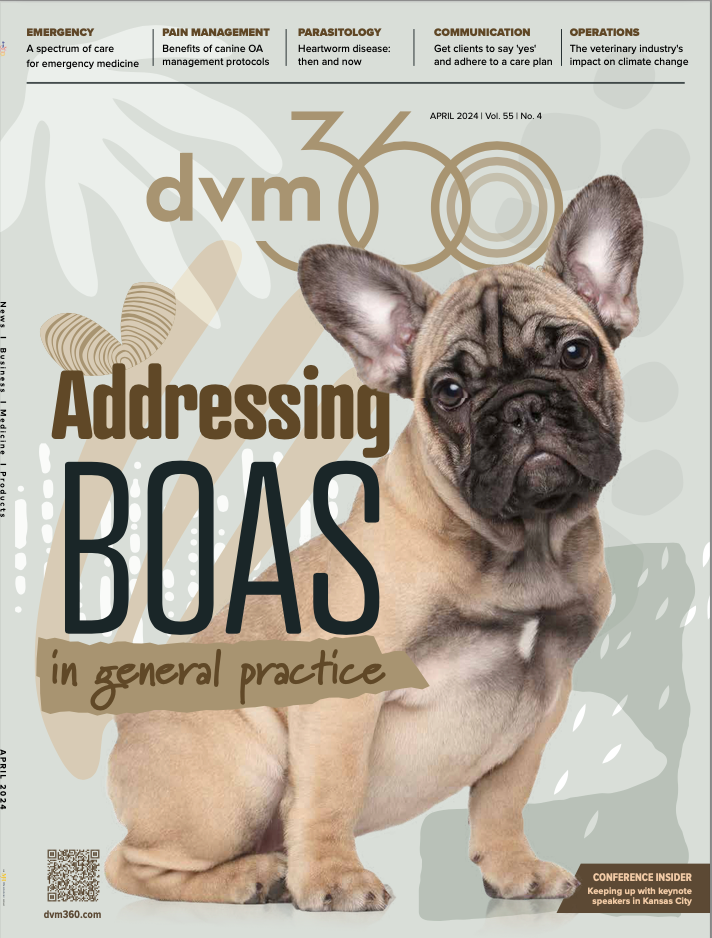A new name for “drop-off”
Scripts for confident client conversations include wellness testing woes
Graphicroyalty / stock.adobe.com

Q. When our schedule is full and clients call with sick pets, we offer drop-off appointments. Can you suggest a better name?
A. I agree that “drop-off” may confuse clients and devalue professional services. The term is defined as a brief delivery—hand you the leash or cat carrier and go. You would never drop off a beloved family member on a hospital’s doorstep.
Use day admission appointment to indicate that pets will be admitted to your hospital for care. Client service representatives (CSRs) should express empathy, explain the admission process, and share the fee upfront.
Say this: “I’m concerned that your pet is sick. Although our schedule is full, we can admit your pet to the hospital for the day. For 15 minutes, you will meet with a technician who will ask you questions about your pet’s symptoms and get its vital signs. A doctor will examine your pet during the day and then will contact you about the next steps. We will provide a treatment plan and get your approval in advance. You may pick up your pet between 4 and 6 pm. Because we will provide nursing care for your pet throughout the day, there is a day admission fee of $__. A technician can admit your pet at 8 or 8:30 am. Which do you prefer?”
Let’s break down the talking points in this script. The word concerned expresses empathy. Explain the importance of getting symptoms and vital signs during admission. When a client says her cat isn’t doing well, the technician’s assessment may identify a possible urinary obstruction, which is an emergency. Let clients know that once a veterinarian examines their pet, they will be given treatment plans, including services and fees, before the pet receives care. Tell the client when pets can be picked up.
Charge a 1- to 12-hour hospitalization fee to cover nursing care in addition
to the urgent care exam fee and other services provided. The Veterinary Fee Reference, 11th ed, reports an average fee of $48.94 for hospitalization without intravenous administration and no overnight stay for a 25-lb dog, $49.97 for a 60-lb dog, and $47.28 for a cat. For consistency and simplicity, set a flat rate for a day admission appointment, such as $50. Share the day admission appointment fee with the explanation of “because we will provide nursing care throughout the day.”
Set guidelines on the number of day admissions allowed per day so your team knows when patient capacity has been reached. CSRs should check with the medical team before referring clients to emergency hospitals once patient capacity is full.
Wellness testing woes
Q. Our technicians offer wellness testing during checkups. Approximately 30% of clients say yes. How can we be more persuasive when talking with clients?
A. I’m a raving fan of preventive screening because 2 of my cats had health concerns identified thanks to testing. Your team can use 5 strategies to increase compliance:
1. Say “early detection screen” instead of “wellness test.” My 13-year-old cat, Caymus, runs Formula 1-like laps through the house every morning and appears to be in perfect health. I might assume a wellness test is just a recommendation and is not medically necessary.
Clients are familiar with early detection screens in human medicine at milestone ages, such as mammograms starting at age 40 and colonoscopies beginning at age 50. Many understand the importance of early detection for better outcomes.
2. Use age analogy charts. Help clients understand their pets’ ages in human years. Age analogy charts can be posters on exam walls, laminated flyers, or PDFs on exam room computers. A 10-year-old dachshund is 60 in human years, and 60-year-olds need preventive screening.
Download a dog age analogy chart at www.pethealthnetwork.com/dog-health/ dog-checkups-preventive-care/how-old-your-dog-people-years and a cat chart at www.pethealthnetwork.com/cat-health/cat-checkups-preventive-care/ how-old-your-cat-people-years.
3. Set affordable prices for preventive screening. Just as dog owners accept heartworm and tick screens for their pets every year, you need to persuade clients to agree to recurring early detection screens. Price sick-patient tests 25% higher than preventive screens. An attractive fee gives your team confidence to resell testing each year. Sick-patient testing requires veterinarians to evaluate results, diagnose conditions, identify treatment solutions, and discuss findings and next steps with clients. Because sick-patient tests require more time from the doctor, they merit higher fees.
To help your team know which fee to charge, use “test” for sick patient workups and “screen” for preventive screening. The Veterinary Fee Reference reports an average of $158.68 for a complete blood count with 16 to 24 chemistries and thyroxine.1 You can remind clients every 6 or 12 months based on the patient’s age and disease stages. The same test may be performed as a sick-patient workup with a fee of $198.35, which is 25% higher for additional doctor time.
Although you may use the same reference laboratory code for both tests, they have different names (test vs screen) for pricing and reminder purposes.
4. Send reminders. Just as you send reminders for intestinal parasite and heartworm-tick screens, do the same for early detection screens. Text this: “<Pet name> is due for an early detection screen by <date>. This blood and urine test assesses overall health and identifies changes early. We will collect samples during a 15-minute technician appointment. Book online, download our app, or call <phone number>.” Hyperlinks lead clients to click and schedule.
5. Write a script. Every team member should use the same talking points for consistent client messages. Share benefit statements to gain acceptance.
Say this: “Your 10-year-old dachshund is 60 in human years. Because pets age more quickly than people, changes may happen quickly. Our early detection screen will identify changes early. Think of this screen as an internal physical exam that lets us see inside to check the health of organs. Our early detection screen is the most comprehensive and affordable. This includes your dog’s annual heartworm/ tick screen, intestinal parasite screen, thyroid function, and urinalysis to determine hydration and kidney function. Our early detection screen is $___. Shall I collect your dog’s blood and urine samples, or do you want to talk with the doctor?”
This script explains the affordability of bundled tests along with the fee. Use the 2 “yes” options technique to ask for a commitment: (1) Yes, collect samples now or (2) Yes, I need to learn more from the veterinarian. During the exam, the doctor may find health concerns that further support testing. Hearing about screening from a technician and veterinarian creates repetition of the message, which a study by the American Animal Hospital Association found increases compliance.2
Laboratory, imaging, and diagnostic services comprised 18% of hospital revenue in 2022.3 Run a report in your software to compare your practice’s performance with this benchmark. Set a compliance goal and track your progress monthly.
Need a script for a client conversation? Submit your scenario to info@csvets.com for consideration in future columns.
Best known as the “Queen of Scripts,” Wendy S. Myers, CVJ, has taught communication and client service skills for more than 2 decades. As founder of Communication Solutions for Veterinarians, she teaches practical skills through online courses, onsite coaching, and conferences. Wendy was a partner in a specialty and emergency practice. Visit Csvetscourses.com to learn more.
References
1. American Animal Hospital Association. The Veterinary Fee Reference, 11th ed. AAHA Press; 2020.
2. American Animal Hospital Association. Six Steps to Higher-Quality Patient Care. AAHA Press; 2009:20.
3. Veterinary Industry Benchmark Report. iVET360. 2023. Accessed March 5, 2024. https://ivet360.com/2023-veterinary-industry-benchmark-report/
